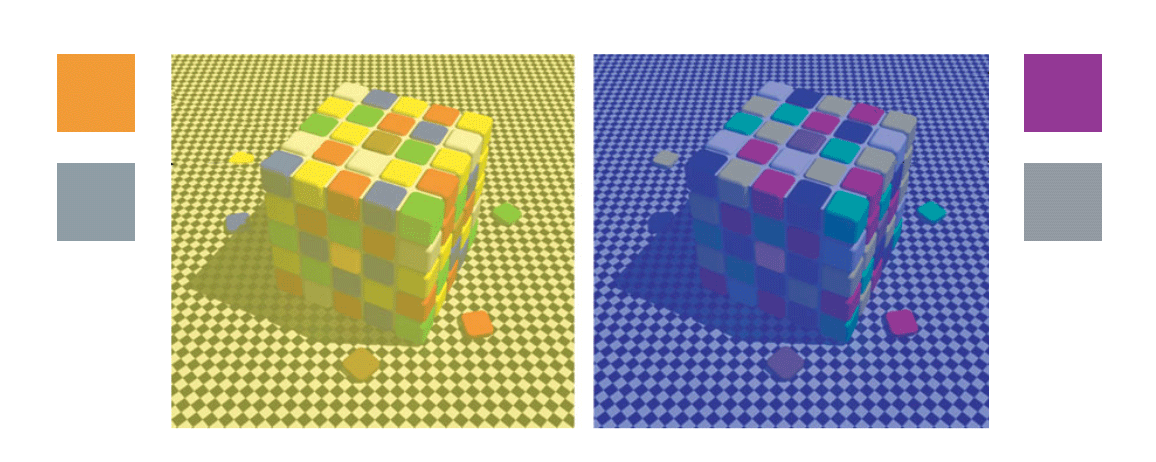Our visual system has the ability to distinguish colors of objects and ignore the color or the wavelength of light source. This phenomenon is called color constancy. For example, following figure shows what our visual system can perceive from a colorful cube when it is illuminated by different color light.

In the picture above, we can distinguish red, blue, yellow and green squares, even though the cubes are illuminated by yellow and blue light. However, when color was extracted from the image, we may find that the real color of the cube is not what we see. In the left picture, the ‘red’ is actually orange and the ‘blue’ is actually cool gray. In the right picture, the ‘red’ is actually purple and the ‘yellow’ is actually gray. (Images are from: Lotto, R. Beau, Surajit Nundy, and Dale Purves. “Why we see what we do: a probabilistic strategy based on past experience explains the remarkable difference between what we see and physical reality.” )
How does our vision system have the ability of color constancy? According to German Biologist Von Campenhausen’s theory, we gain this ability during the evolution of our vision system. In the natural world, one important way for animals to distinguish edible food or avoid potential danger is of color. But natural daylight is not constant. During morning and dusk, the color of skylight looks warm; and during the middle of the day, it will be cool. As a result, the color of objects also varies accordingly. This may cause threatening to survival because the animal may fail to find right food or recognize the toxic fruit. With vision evolution and experience accumulation, human and many animals evolve the color constancy, which makes the vision system can always distinguish the color of objects in the varied environment.
References:
Lotto, R. Beau, Surajit Nundy, and Dale Purves. “Why we see what we do: a probabilistic strategy based on past experience explains the remarkable difference between what we see and physical reality.”
American Scientist 90.3 (2002): 236+. Biography in Context. Web. 14 Sept. 2015.
Vincent Walsh, Janusz Kulikowski: “Perceptual Constancy: Why Things Look as They Do.” Cambridge University Press. 13 August, 1998. P324.
Martin J. Tovée. “An Introduction to the Visual System.” Cambridge University Press; 2 edition (July 14, 2008).
